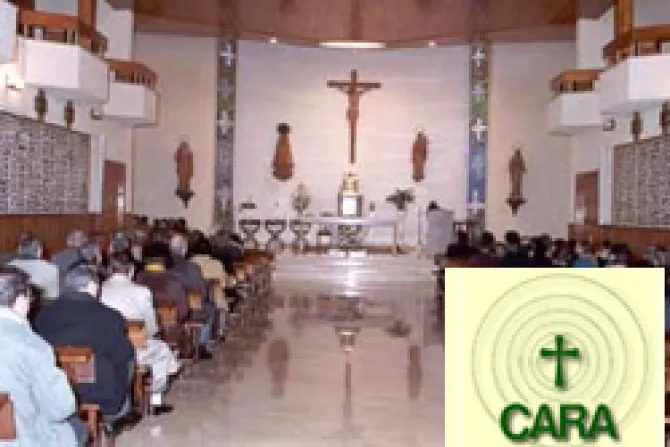Washington D.C., May 17, 2008 / 06:43 am
The Catholic results of the Pew survey entitled "U.S. Religious Landscape Survey" have been closely examined by CARA, a Georgetown University research center who points out that commentators may have initially jumped to conclusions after reading the results in the Pew study.
Mark Gray, Director of CARA Catholic Polls; and Joseph Claude Harris, an independent Church research analyst, note in a Letter to the Editor in the April 6, 2008 edition of Our Sunday Visitor that when the Pew survey results were released, “Commentators were swift to assign blame, noting a range of factors from the sex abuse crisis to shortages of priests, or even the long-term effects of the Second Vatican Council.”
The Catholic Church has lost the most members out of all the denominations but, as Gray explained to CNA, “it's also the biggest religion and when you translate the discussion in to proportions you can see the Catholic Church is doing quite well comparatively. It keeps more of its young faithful than any Protestant denomination.”
A CARA essay titled, “The Impact of Religious Switching and Secularization on the Estimated Size of the U.S. Adult Catholic Population,” details the proportions: the “Pew study indicates that the Catholic Church has retained 68 percent of those who grew up Catholic. By comparison, 60 percent of those raised Baptist are still Baptists as adults.” Retention rates are much lower for “Lutherans (59 percent), Methodists and Pentecostals (both 47 percent), Episcopalians (45 percent), and Presbyterians (40 percent).”
In fact, out of all religions in the U.S. consisting of at least 3 million adult members, “only those who were raised Jewish or Mormon are more likely than Catholics to keep their faith as adults (76 and 70 percent, respectively),” the essay stated.
Another issue addressed by CARA is the concern that Pew’s “Religious Landscape Survey” underestimates the size of the Catholic population.
CARA points out that the Pew survey “estimated a smaller proportion of Latinos selfidentifying as Catholic compared to other surveys (i.e., where Spanish or bilingual interviewing is used), including other recent Pew studies.” This is something noted by the authors of the Pew report who state, “The number of Latinos in the Landscape Survey who identify themselves as Catholic (58%) is considerably lower than in a major survey of Latinos the Forum conducted in 2006 with the Pew Hispanic Research Center, where more than two-thirds (68%) identified as Catholic.”
The CARA essay estimates that “The difference between the 58 percent and 68 percent affiliation among adult Latinos is equivalent to 2.7 million U.S. adults.”
Another matter that has led commentators to jump to conclusions is that the Pew report does not include information as to when a person left the Catholic Church.
In a 2003 poll, CARA found that “more than half of former Catholics stopped considering themselves Catholic before 1988 (54 percent).” Gray told CNA that the amount of Catholics leaving the Church has been fairly constant over time. “There are not a lot of big differences in any segment of time and no evidence of some moment where there was a mass exodus.”
The CARA essay notes, “The median age at which former Catholics stopped considering themselves as Catholic is 21. This median age is consistent with research that indicates that these religious changes may often coincide with the young adult stage of life where separation from family, relocation, increased mobility, and marriage are common”
CARA’s report concluded by stating that the presentation of the results “may have left the impression that a vast number of Catholics recently got up and left the faith and that these losses were worse than those experienced by any other faith. In relative terms—as the percentage of those who retained the affiliation of their childhood—the Catholic Church has been among the most successful faiths in the United States."


